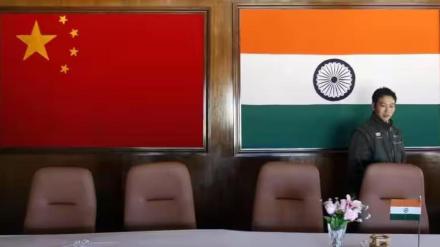India and China are proactively engaging in confidence-building measures aimed at facilitating the disengagement of personnel and weaponry in the highly sensitive and disputed eastern Ladakh region. These strategic efforts have gained significant momentum in anticipation of a crucial bilateral meeting between Indian Prime Minister Narendra Modi and Chinese President Xi Jinping next week on the sidelines of BRICS Summit in South Africa.
These diplomatic maneuvers were preceded by recent high-level talks between Division Commanders from both sides, focusing on effectively addressing the ongoing disengagement concerns primarily centered around the Depsang and Demchok standoff areas.
The central objective behind these recent discussions has been to foster mutual confidence and collaboration on the ground. These Major General level talks have transpired approximately one week following the remarkable 19th Corps Commander Level talks, conducted over an unprecedented two-day period from August 13th to 14th.
Held at the Chushul-Moldo border meeting point, this bilateral engagement marked a significant shift in approach. In the aftermath of the violent clash in the Galwan Valley, India’s consistent stance has underscored the necessity of establishing an atmosphere of peace and stability along the border regions with China.
According to the sources in the defence and security establishment, Major General Prasanna Mishra represented the Indian delegation, engaging in productive deliberations with his Chinese counterpart.
Notably, Major General Prasanna assumes the pivotal role of commanding the Indian Army’s 3 Division, which shoulders the responsibility of securing and managing the 832-kilometer long Line of Actual Control (LAC) specifically within the Ladakh region.
Background
The long-standing standoff that has persisted in the Depsang Y-Junction and Demchok regions has its roots in historical complexities. This standoff has caused Indian military forces to encounter substantial challenges when attempting to access their traditional patrolling points, including locations such as PP 10, PP11, PP 11A, PP12, and PP13. This expanse encompasses a staggering 952 square kilometers of disputed territory.
Financial Express Online has previously reported about the presence of Chinese encampments on the Indian side of the Demchok region. A consequential aspect of this situation lies in the Chinese refusal to withdraw their presence from these encampments. This impasse has resulted in Chinese control over an estimated 150 square kilometers within this contentious area. While notable progress has been achieved in disengaging personnel and equipment from several areas such as Galwan, the North and South banks of Pangong Tso, and Gogra-Hot Springs, these specific regions continue to pose significant challenges.
Two Meetings
Two separate and distinct meetings were convened at the Major General level, strategically held at both the Chushul and Depsang locations. These specific points have been designated as significant border personnel meeting points within the eastern Ladakh region. The outcome of these discussions holds immense significance, as they signify dialogues conducted at a rank below that of Lieutenant General.
In the pursuit of practical and viable solutions that can be translated into actions on the ground, Major Generals from both sides are making efforts aimed at addressing the complex realities that prevail along the un-demarcated Line of Actual Control (LAC).
A key focal point of these discussions is the resolution of disputes pertaining to the Depsang plateau, spanning a vast 972 square kilometers. Central to this contention is a specific geographic bottleneck situated on the eastern edge of the Depsang region. The persisting disagreement over troop positions in this particular bottleneck has been the major reason of the standoff.
A noteworthy facet of the Indian perspective involves the PLA’s (People’s Liberation Army) deliberate attempts to obstruct of Indian patrols along the Depsang patrolling route.
Earlier this week, a joint statement was issued at the end of the 19th round of the India-China Corps Commander-Level Meeting. Conducted on August 13th to 14th at the Chushul-Moldo border meeting point on the Indian side, this statement conveyed a sense of optimism stemming from the positive and constructive discussions that transpired.
These discussions were fundamentally centered on resolving the lingering issues along the LAC in the Western Sector, signifying the situation in the eastern Ladakh region. Mutual commitment was emphasized, underlining the urgency to promptly address these issues while sustaining the momentum of dialogue and negotiations across both military and diplomatic channels.
India has, as reported earlier, presented a three-step framework to China, intended to de-escalate the prevailing tensions. This well-thought-out approach begins with the initial step of disengaging troops situated in close proximity along the LAC, effectively reverting to the troop positions that prevailed in April 2020. The subsequent phases encompass de-escalation and de-induction, encompassing the strategic withdrawal of troops and associated equipment to levels that were maintained prior to April 2020. This meticulous and graded approach is underpinned by the overarching goal of gradually restoring a sense of stability and tranquility to a region that has been plagued by volatility.
